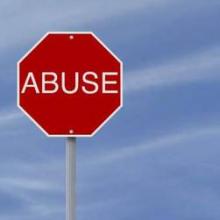School-based educational programs to prevent sexual abuse appear to increase children’s knowledge, disclosure of abuse, and protective behaviors with no measurable harms, based on moderate evidence in an updated Cochrane systematic review.
These programs “seek to prevent child sexual abuse by providing students with knowledge and skills to recognize and avoid potentially sexually abusive situations, and with strategies to physically and verbally repel sexual approaches by offenders,” Kerryann Walsh of Queensland University of Technology in Brisbane, Australia, and her associates reported online. “Interventions aim to transfer the knowledge and skills learned by the child or adolescent in the classroom to real-life situations,” they wrote (Cochrane Database Syst. Rev. 2015 April 16 [doi:10.1001/14651858.CD004380.pub3]).
An estimated 10%-20% of female children and 5%-10% of male children have experienced some form of sexual abuse, ranging from unwanted touching to penetration, but two-thirds of individuals never report their abuse, and most cases are not reported to the authorities. Outcomes linked to sexual abuse include depression, posttraumatic stress disorder, suicidal behaviors, anti-social behaviors, eating disorders, substance abuse, sexual dysfunction, sexual revictimization, and parenting difficulties, as well as various chronic physical health problems.
Walsh’s team searched 14 databases and two trial registers for new randomized controlled trials to update the October 2013 review. This update excluded one previous trial and added 10 new trials through September 2014 to the 14 already included. The 24 total trials analyzed came from the United States, Canada, China, Germany, Spain, Taiwan, and Turkey, and included 5,802 elementary and high school students.
School-based programs increased children’s protective behaviors almost six times over children not receiving the intervention, based on two trials involving 102 children (odds ratio, 5.71).
Questionnaire-based knowledge about sexual abuse increased among children receiving education, based on analysis of 18 trials involving 4,657 children, although the trials differed significantly from one another. Similarly, children’s knowledge increased when assessed using vignettes across 11 trials, also highly heterogeneous, involving 1,688 children. The four trials assessing children’s knowledge over time found they retained their knowledge at least 6 months later.
Children who received the school-based intervention were 3.6 times more likely to disclose previous or current sexual abuse than children who did not receive the intervention (OR, 3.56).
The three trials that assessed harms found no increased or decreased anxiety or fear among the children receiving the intervention, but none of the trials assessed anxiety or fear among the children’s parents. The authors urged caution in interpreting the findings because high or unclear risk of selection bias, detection bias, and attrition bias, and too little information was available for the authors to conduct subgroup analyses. “Study quality was compromised in about half of the included studies due to suboptimal data collection methods for study outcomes and inappropriate data analysis,” the authors wrote.
Further, “studies have not yet adequately measured the long-term benefits of programs in terms of reducing the incidence or prevalence [or both] of child sexual abuse in program participants,” Dr. Walsh and her associates said.
The trials were heterogeneous, and the intervention programs lasted anywhere from a single 45-minute session to 20-minute sessions on each of 8 consecutive days. Common themes among the courses included teaching body ownership, safety rules, private parts of the body, who to tell, and telling apart types of touches and types of secrets. Videos, theatrical plays, and multimedia presentations, sometimes incorporating puppetry, comics, songs and coloring books, were used to deliver the programs. The teaching methods included “rehearsal, practice, role-playing, discussion, and feedback.”
Dr. Walsh received Australian Research Council Discovery Project Scheme funding for research about sexual abuse prevention programs in Australia conducted concurrently with this review. No other authors reported relevant disclosures.

